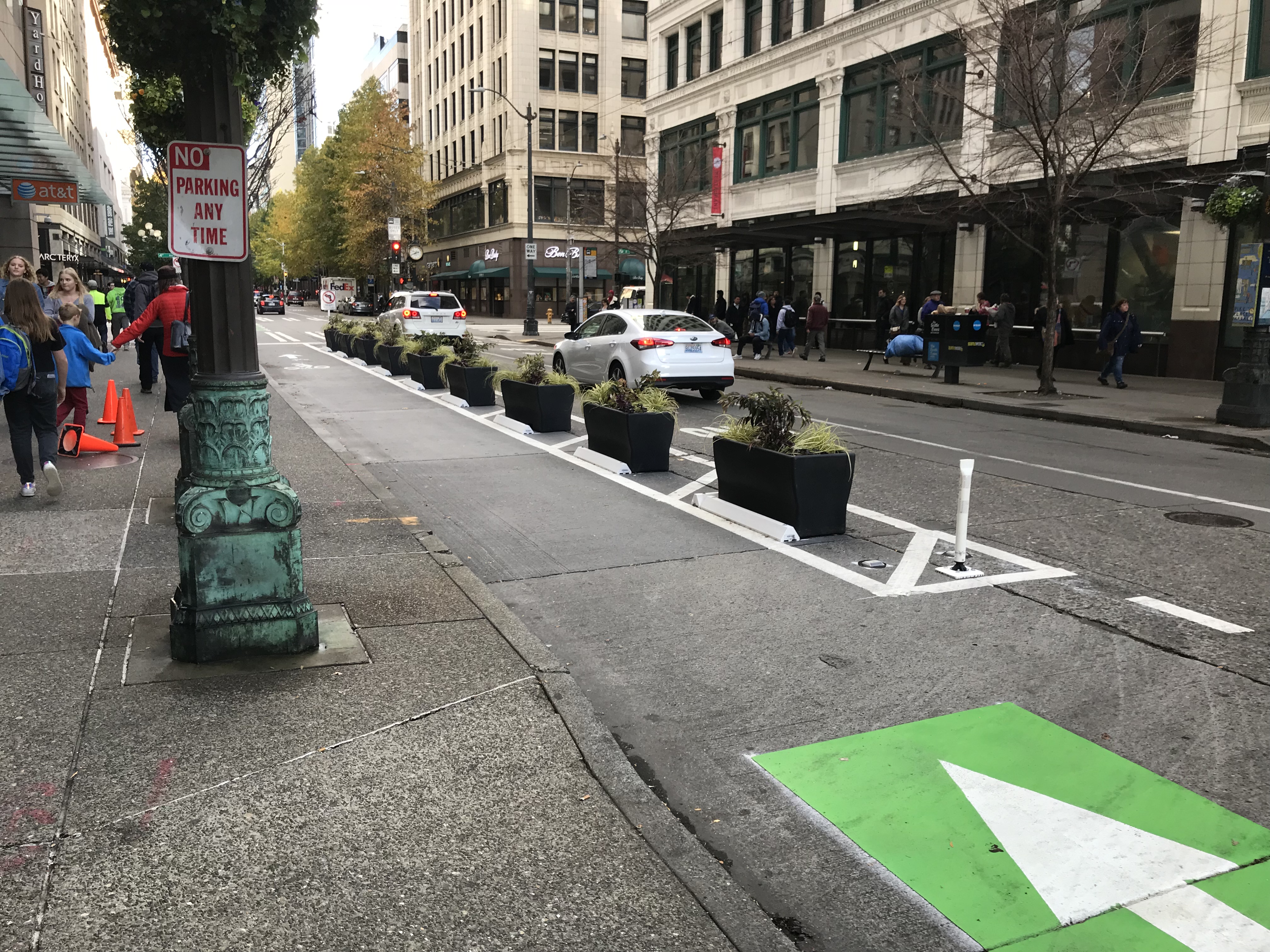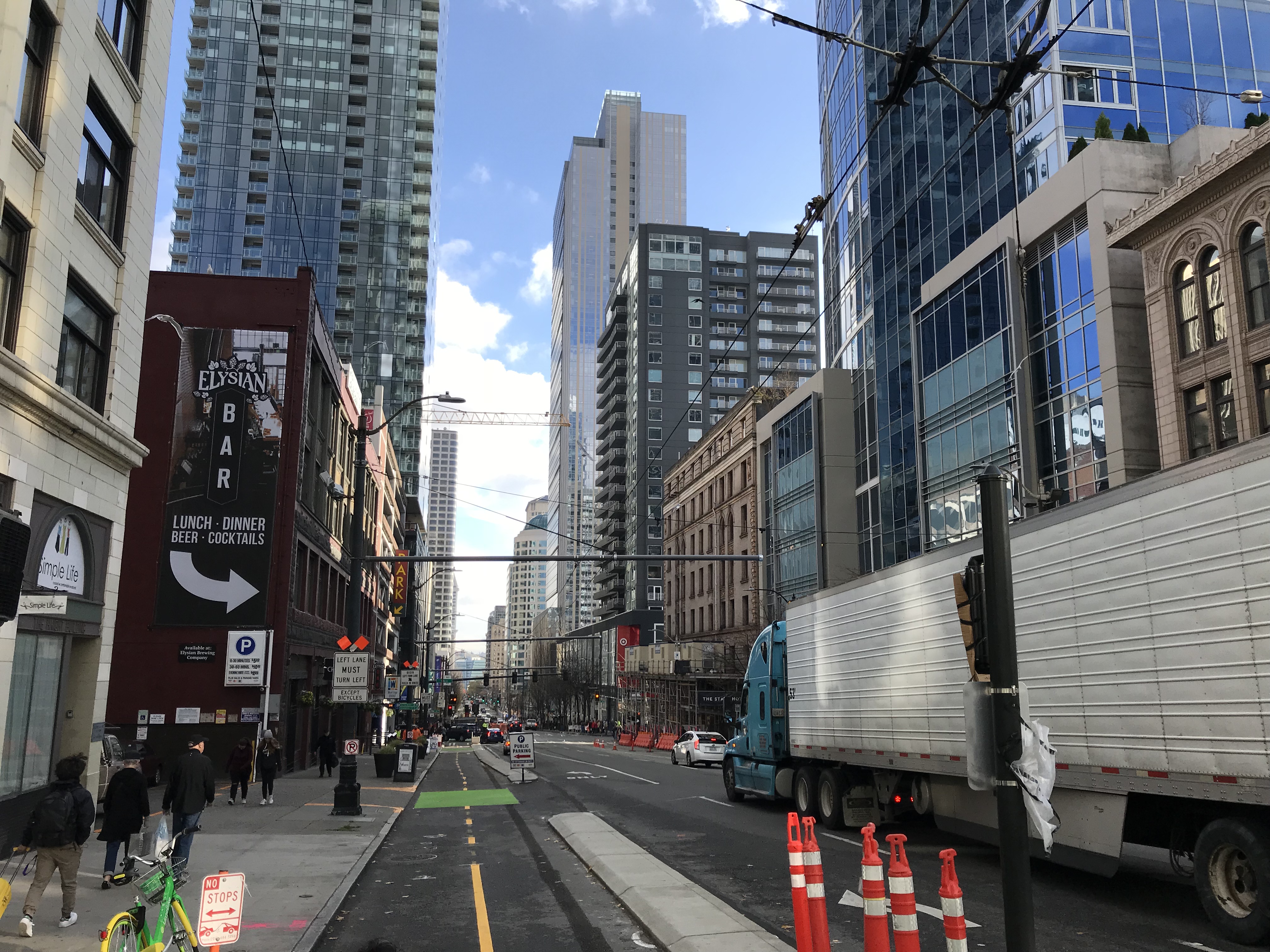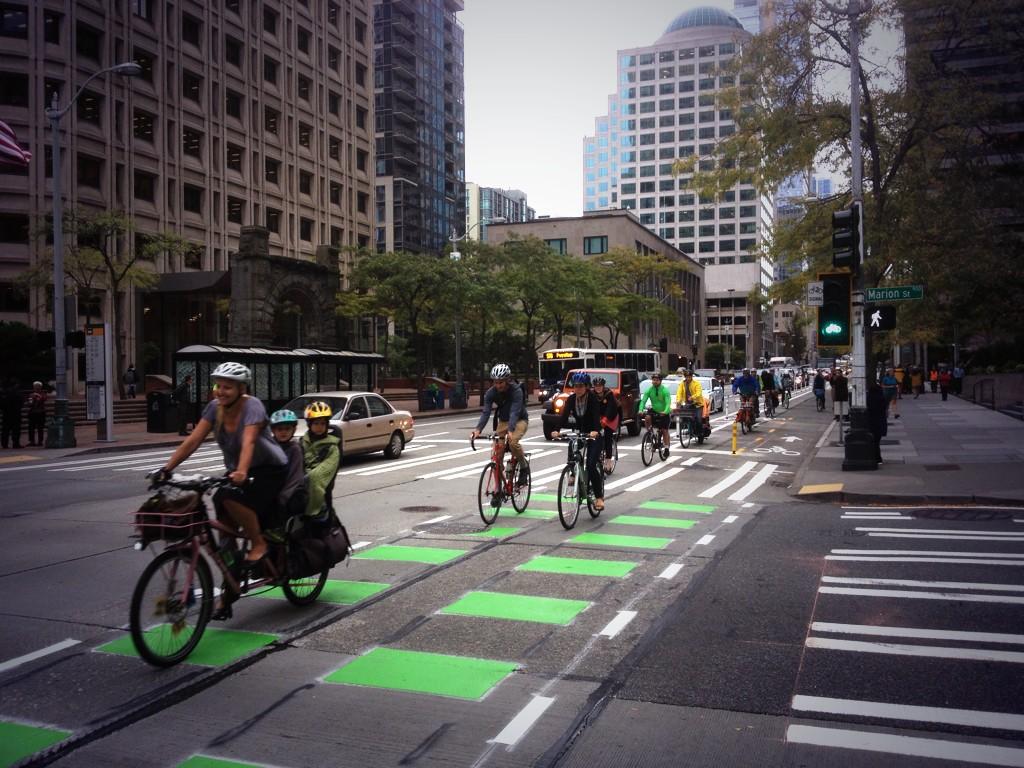As a relatively new cyclist and resident of South Seattle, the recent The Urbanist piece about the downgrading of protected bike lanes frustrated me. The bike lane already on the Othello-Myrtle-Swift corridor (with intermittent sharrows), or even a widened bike lane, does not provide the benefits of a true protected bike lane. There are many benefits to the physical protection of protected bike lanes (such as decreased risk of cyclist injuries by up to 90%), but one that may be overlooked is the protection from air pollution emitted by motor vehicles.
People riding bicycles have a 4.3 times higher ventilation rate than an individual breathing in their car, meaning that cyclists inhale more air pollutants over the same amount of time as compared to an individual at rest. Working harder on a bike (such as riding uphill, as often occurs in Seattle) leads to a further increased pollution intake.
The World Health Organization now classifies air pollution as carcinogenic, or a cancer-causing agent. The American Lung Association directly ties air pollution to lung cancer, as well as an increased risk of early mortality, heart disease, and asthma attacks. A large fraction of air pollution comes from motor vehicle emissions. The Environmental Protection Agency estimates that the transportation sector is responsible for at least 50% of total nitrogen oxide (NOx) emissions, 30% of total hydrocarbon emissions, and 20% of total particle emissions in the United States. These gas and particle emissions from motor vehicles impact climate, air quality, and human health.

Protected bike lanes (PBLs), or a physical barrier between the cyclist and the pollution source, minimizes exposure to harmful air pollutants. Recent research suggests that cyclists in bike lanes shared with traffic are exposed to NOx and particle concentrations that are 33% higher than cyclists in bike paths separated from vehicle traffic like PBLs.
A study in Montréal found that cycling on a PBL significantly reduced the level of air pollution exposure, as compared to a bicycle lane or shared road. Current ongoing research in New York City indicates that cyclists in lanes separated from traffic by a row of parked cars breathe in less air pollution than those in bike lanes adjacent to traffic. A study participant measured his ventilation rate as eight liters per minute when at rest; when cycling his ventilation rate increased to 70 liters per minute, increasing his susceptibility to harmful pollutants.
The physical barrier between cyclists and motor vehicles matters. Thin posts or bollards positioned every few feet may increase cyclist safety, but these posts do not impact cyclists’ exposure to air pollution. The surface area of the physical barrier between the cyclist and motor vehicles allows deposition of airborne particles and gases. The physical barrier also promotes dispersion, or changing the direction of pollutants. Any vegetation or concrete barriers should be close to the pollution source to maximize dilution of the polluted air with cleaner air from above the pollution source. While the extent of deposition and dispersion differs as a function of barrier type (vegetation versus concrete), a solid physical barrier between motor vehicle emissions and cyclists will greatly reduce the amount of inhaled air pollution.

Does the harm of air pollution outweigh the health benefits of cycling? Fortunately, studies agree that aside from the most extreme pollution conditions, the physical benefits of cycling outweigh the harm of inhaling air pollutants.
A 2010 Dutch study found that the benefits of physical exercise via replacing car travel with cycling added three to 14 months to an individual’s life, while inhaled air pollution subtracted 0.8 to 40 days. In areas with high particle concentrations (e.g., Beijing, Delhi, and summer wildfires in Washington), the harm of air pollution exceeds the benefits of physical exercise after about 1.5 hours of cycling per day.
However, sensitive populations (e.g., the elderly and those with asthma) are potentially more susceptible to air pollution. Further, while the health benefits of cycling are greater than the detriments of air pollution 99% of the time, this is largely due to the benefits of physical activity, and decreasing urban air pollution should still be a priority.
The Seattle Department of Transportation should include protection from air pollution in analyzing street improvements and rely less on bollard-only PBLs. By incorporating planters or similar solid barriers, as seen on the Second Avenue bike lane, or parking-separated PBLs as seen in Ravenna,a physical separation between cyclists and vehicle exhaust ensures access to clean air for people traveling by bike or foot in Seattle.
This article was made possible by the generous contributions of our readers. To pitch an article to The Urbanist, please see these guidelines. We look forward to hearing your ideas. To donate to support more content like this visit our donation page.

Beth Friedman
Beth Friedman currently works in the air quality field. She graduated from the University of Washington with a PhD in Atmospheric Sciences.

